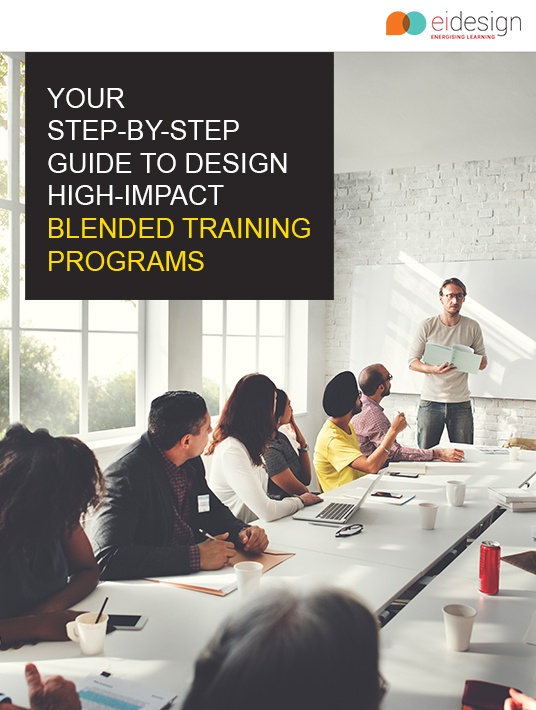Your Step-Βy-Step Guide To Design High-Impact Blended Training Programs
A question you may have faced or heard in recent times – "Is Instructor-Led Training (ILT) dying"?
No, ILT isn’t dying. But there certainly has been an increase in large-scale conversions of ILT materials to online learning. While a lot of this is triggered by challenges on training budgets, I believe it also provides an opportunity to relook at the traditional format, and enhance the training delivery.

Take a look at the following insight that reaffirms the acceleration in adoption of blended or fully online training (vis-à-vis Instructor-Led Training or ILT):
"Technology has not decreased the demand for Instructor-Led Training but gives instructors new tools to reach learners…The trend in Instructor-Led Learning is enablement through technology, both in hybrid and fully virtual delivery." 2016 Benchmark Report: The State of Online Training.
As you evaluate options on how you can transform your existing ILT programs to fully online or blended, there are several aspects you need to watch out for. The eBook Your Step-Βy-Step Guide To Design High-Impact Blended Training Programs focuses on providing these aspects. I have structured the eBook as a series of questions and answers that address your queries ranging from basics, benefits, and deployment to tips and practices that you can use. I wrap up the eBook with couple of examples to show the impact of the transition (from facilitated, Instructor-Led mode to blended delivery).
How Will This eBook Help You?
As highlighted, I have created this eBook as a step-by-step guide that you can use as you embark on the conversion of your ILT program to a blended training program. These inputs will certainly help you in creating a high-impact blended training program. More specifically, you can use the tips and best practices to optimize your current blended training programs.
The eBook Addresses Questions Like:
- What is the blended training approach?
- What is triggering the adoption of blended training over Instructor-Led Training, or ILT?
- What are the benefits that learners and organizations gain if they adopt a Blended Training approach over a traditional ILT?
- How do learners respond to the blended training approach?
- How can blended training be delivered?
- Are there any specific models that can be used to determine how to offer blended training?
- How can you determine what degree of blending would be most effective?
- Are there any best practices that can be used to increase the impact of blended training?
- What are the tips you can use to create highly effective blended training programs?
About The eBook
The eBook is structured into 5 sections, as shown here:
Section 1: Basics
This section outlines the definition of a blended training approach. It then moves on to examining the reasons or triggers that are leading to acceleration in adoption of this conversion.
Section 2: Benefits
This section builds up from the previous section to detail out the benefits that organizations accrue if they adopt a blended training approach over a traditional ILT approach. It examines these benefits from two perspectives – what do the learners gain, and what do the organizations gain in this exercise. It also looks at a related aspect of how learners respond when you transition from a predominantly ILT approach to blended training approach.
Section 3: Deployment
Having gained the knowledge on the basic aspects of blended training adoption, this section builds further to address the crucial aspects on how the blended training can be delivered. It outlines the models that you can use to offer blended training. More significantly, it provides cues on how to determine what degree of blending would be most effective.
Section 4: Tips Αnd Best Practices
After gaining an understanding on the deployment, this section outlines the best practices that can be used to increase the impact of Blended Training. Additionally, it provides several tips that you can use to create highly effective Blended Training programs.
Section 5: Blended Training Ιn Action
The eBook wraps up with this section that showcases 2 examples on how you can enhance the impact of ILT by adopting a Blended Training approach.
Do download this eBook - Your Step-by-Step Guide to Design High-Impact Blended Training Programs, and use this to evaluate the right approach to offer blended training. Use the tips and best practices to design high-impact blended training programs in your organization.
The Impact
You will see why blended training can add value to your training delivery, and enhance its impact. Besides resulting in cost savings and enhanced flexibility, it will help you achieve higher learner engagement, and boost employee performance.
More significantly, the examples show you how blended training can create the required impact.
If you have any specific queries or would like to see how you can use blended training in your organization, do contact me at [email protected].







